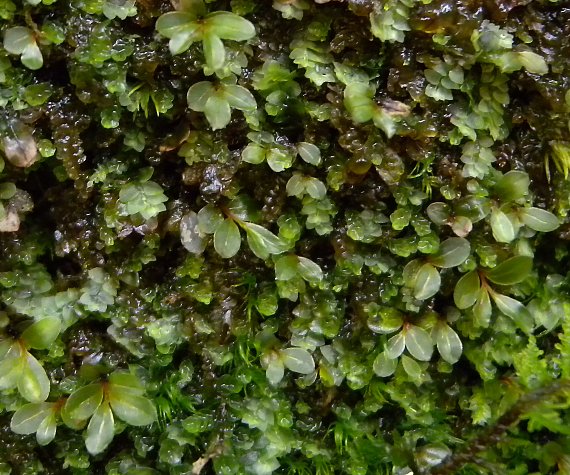
Overall, a loose tuft of larger leaves occurs at the tip of each stem, while more sparsely distributed smaller leaves occur below. When the leaves are wet, they are relatively flat and spreading, while dry leaves crumple and shrink in size. This moss is dioecious, forming male and female reproductive organs on separate plants. Male reproductive organs (antheridia) occur in a small shallow cup at the apex of fertile male plants; this cup is surrounded by a whorl of leafy bracts. These bracts closely resemble the leaves of this moss. The tiny antheridia are oblongoid in shape and brown to black at maturity; each antheridium consists of a packet of sperm. As a result of raindrop logistics or some kind of animal disturbance, the sperm can spread to other plants. When the archegonium of a female plant is fertilized by sperm, it produces a solitary spore-bearing capsule on a slender stalk (seta). The stalk is about 20-30 mm. (¾–1¼") long, light green to orange-red, and ascending to erect. At the apex of this stalk, the spore-bearing capsule is either drooping (pendulous) or horizontal. The capsule body and its lid (operculum) are about 2–3.5 mm. long.
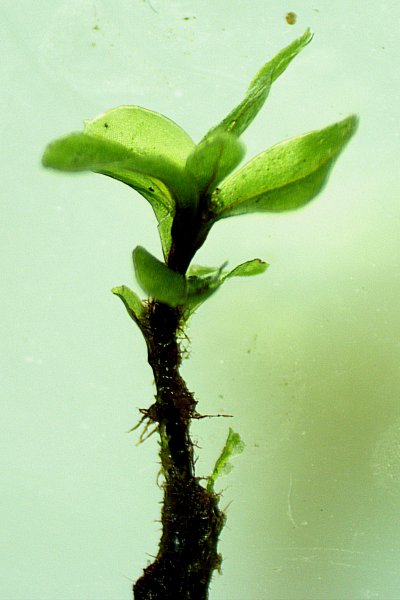
The capsule body is cylindrical-ellipsoid in shape, tapering at its base. This capsule becomes orange at maturity. The lid of the capsule body is conical at the base, becoming more beak-shaped at its tip. When the lid falls off, a ring of outer teeth (peristome) and inner teeth (endostome) is revealed. These teeth are orange-colored and they regulate the release of the spores to the wind (or they may be transported by water). Both the lid and upper body of the capsule are covered initially with a long-beaked membranous hood (calyptra), but it soon falls off. Individual spores are 30-40 micrometers across, globoid in shape, and very finely warty; they are above-average in size for a moss. This moss also reproduces by forming clonal buds (gemmifera) from its persistent protonema (mat of fibrous strands, representing the first stage of development of a moss after spore-germination). Extending into the substrate, there is also a dense mat of brown to black rhizoids at the base of each plant.
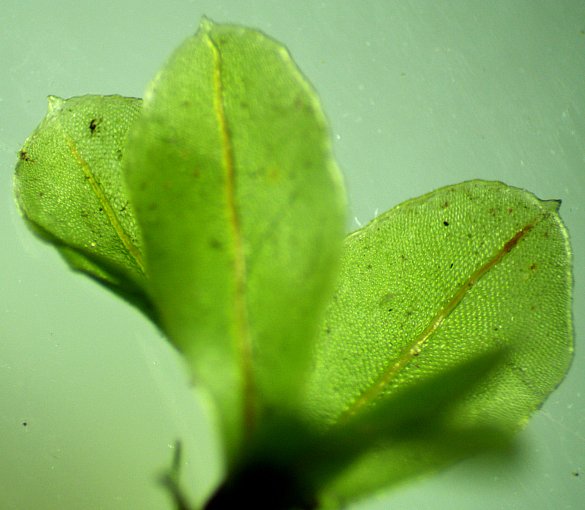
Cultivation: The preference is light to deep shade, wet conditions (but not submergence in water), and sandstone rock, although this moss also adapts to wet sand if moisture levels are relatively stable. Some direct sunlight is tolerated in cooler boreal areas, but in Illinois this moss requires shade.
Range and Habitat: Red Penny Moss (Rhizomnium punctatum) is uncommon in Illinois, occurring in widely scattered locations throughout the state (see Distribution Map). This moss is widely distributed in North America and Europe; it tends to be more common in cooler boreal areas and mountainous areas. In Illinois, habitats include moist shaded rocks along streams, moist shaded sandstone walls in woods, moist north-facing cliffs, and wet sandy ground along woodland streams. In one isolated case, this moss was found on the rungs of an old ladder. In Illinois, this moss most commonly occurs on wet sandstone walls not far from streams inside a small rocky canyon or a ravine. It often co-occurs with other mosses and leafy liverworts in high quality natural areas.
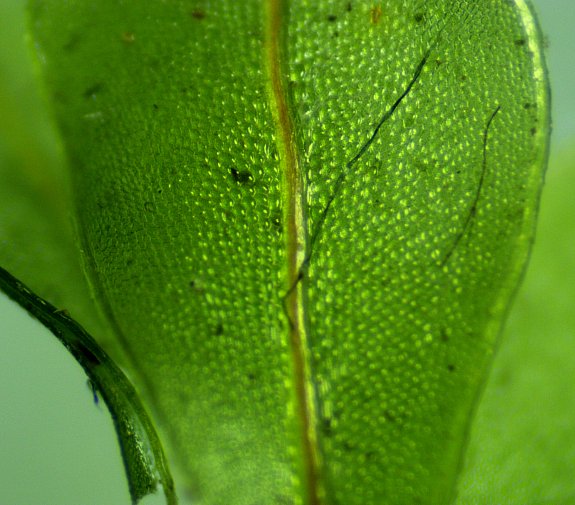
Faunal Associations: The larvae of a crane fly, Tipula oropezoides, feeds on the leaves of Red Penny Moss (Rhizomnium punctatum) and probably other mosses in eastern North America (Wyatt & Stoneburner, 1989). It is possible that some insects or other fauna may help to spread the larger-than-average spores of this moss to new locations.
Photographic Location: A moist sandstone wall near a stream inside a large ravine in west-central Indiana. Close-up photos were taken indoors with a microscope.
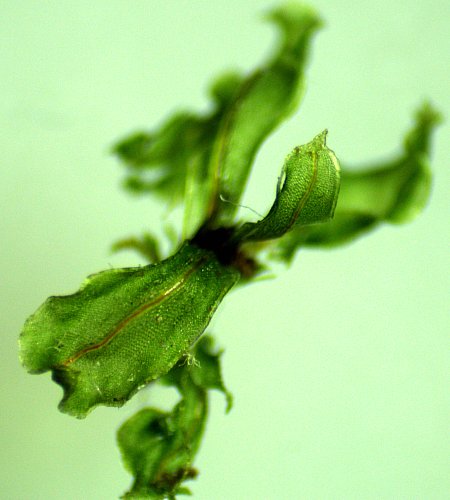
Comments: This moss has attractive delicate leaves. It is the most common species of its genus in Illinois and the lower Midwest generally. Red Penny Moss (Rhizomnium punctatum) can be readily distinguished from two other mosses, Rhizomnium magnifolium and Rhizomnium pseudopunctatum, by the presence of fine rhizoids (looking like brown fuzz) that extend along the entire length of the stems of the latter two mosses. Red Penny Moss only has coarse brown rhizoids that extend upward to the lower or middle portion of its stems. Another species, Rhizomnium appalachianum (Appalachian Penny Moss), can be distinguished by its larger leaves (7-11 mm. long) and the presence of coarse brown rhizoids that extend along the entire length of its stems. However, this latter species is not known to occur in Illinois at the present time. It should be noted that North American populations of Red Penny Moss are sometimes classified as the subspecies, Rhizomnium punctatum chlorophyllosum, while European populations of this moss are classified as the typical subspecies, Rhizomnium punctatum punctatum. This is because North American populations of this moss tend to be smaller in size than its European populations. An older scientific name for this moss is Mnium punctatum. In Great Britain, this moss is called Dotted Thyme Moss.